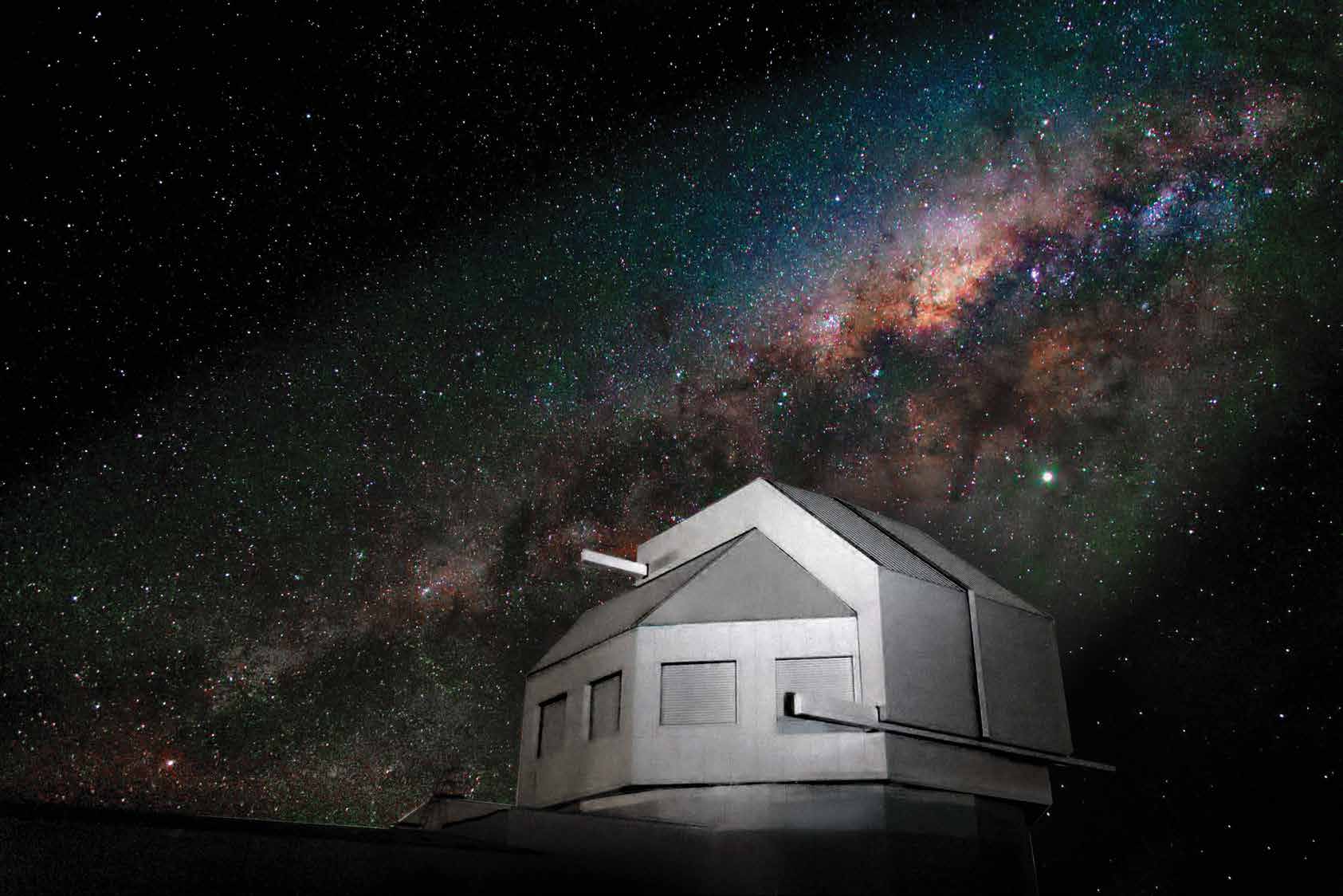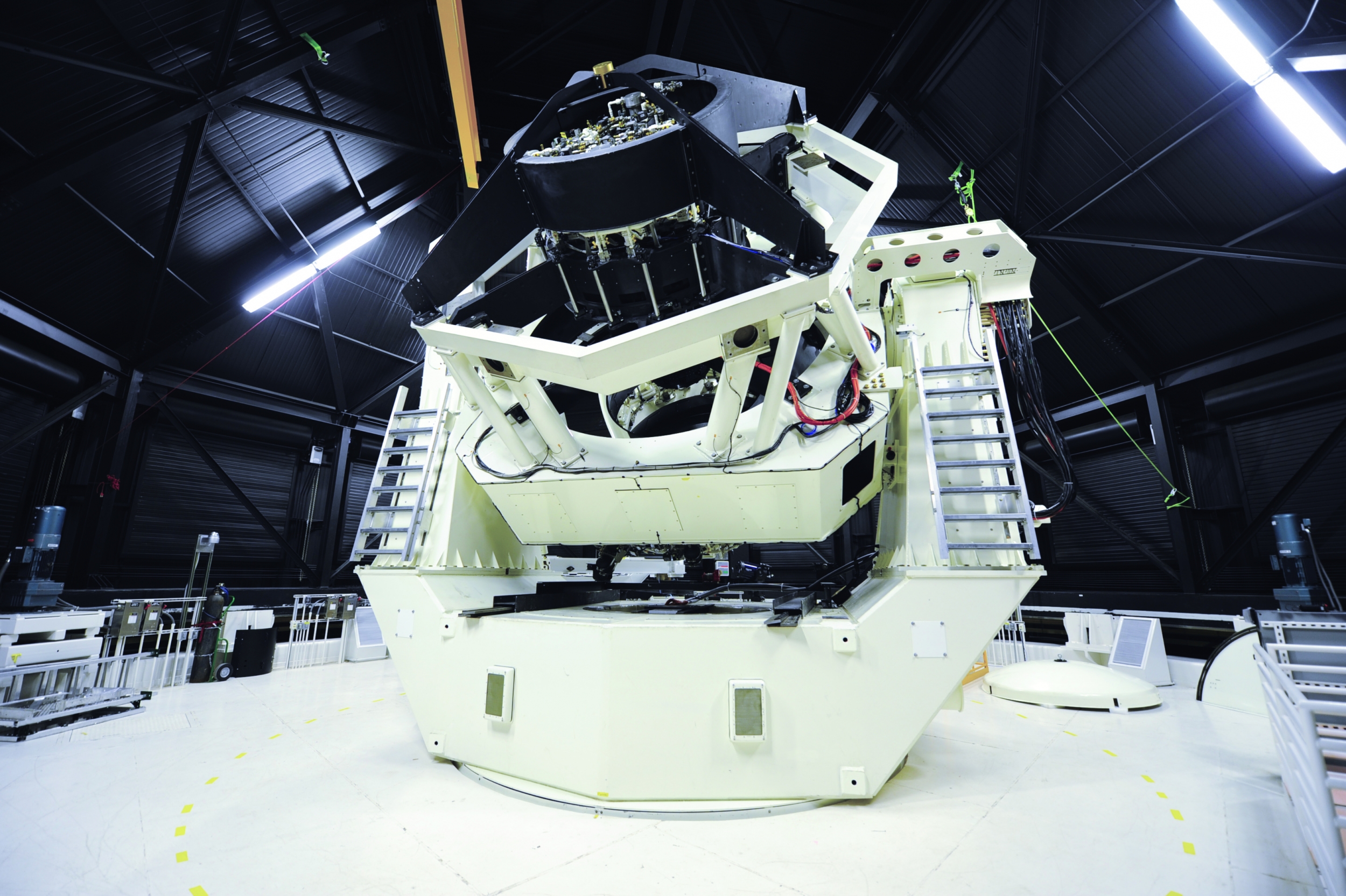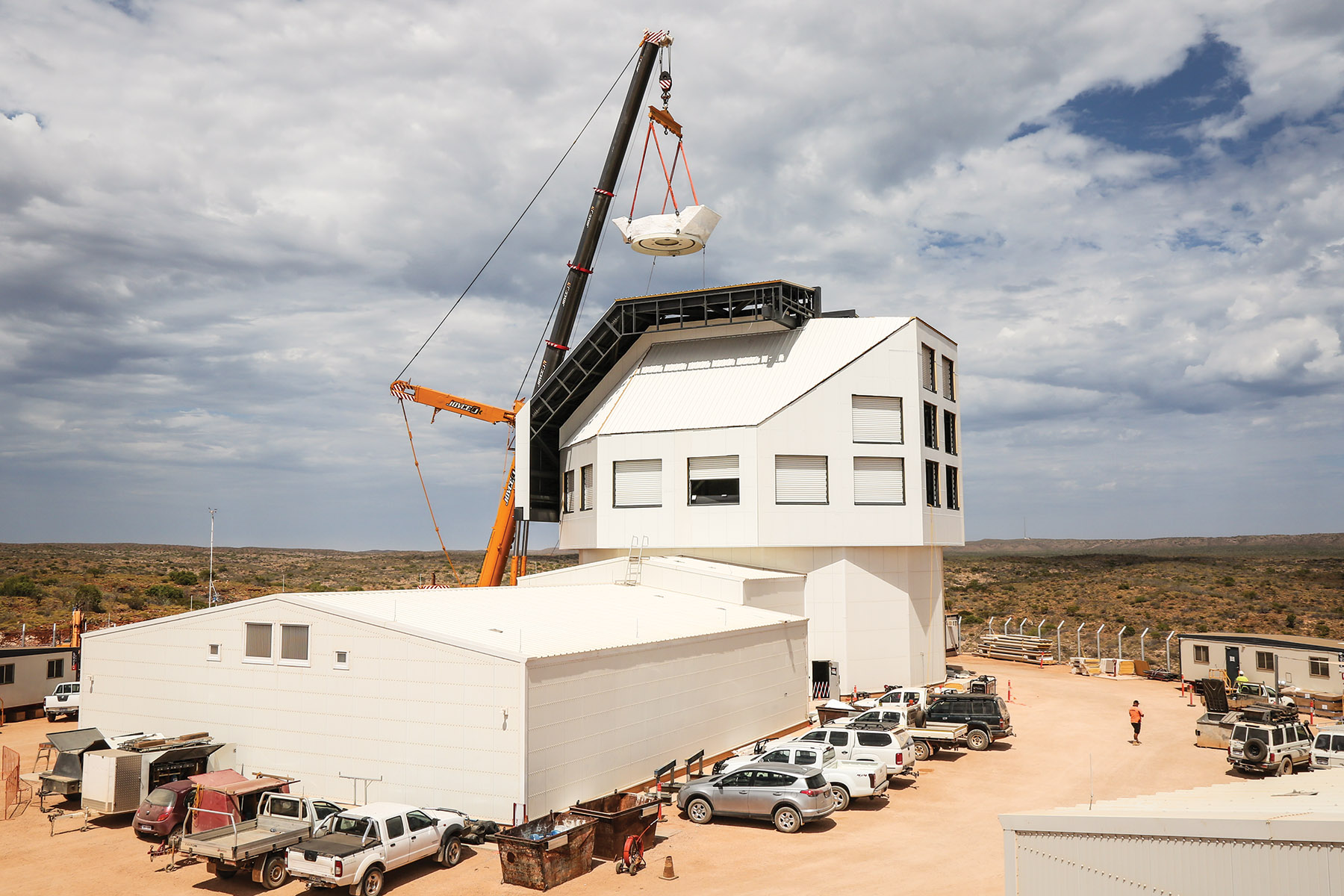The Space Surveillance Telescope in Western Australia captures its first image

Stargazers are drawn to the Coral Coast of Western Australia because the pristine night sky there allows their telescopes to see far into the universe. On March 5, 2020, at the Naval Communication Station Harold E. Holt on that coast, a very sensitive telescope, transplanted from the United States to a new facility, looked into the deep darkness and achieved "first light," a term meaning the telescope's optics were successfully aligned with its wide-field-of-view camera to allow the telescope to capture its first images of objects in orbit.
This high-sensitivity, wide field-of-view optical system is the Space Surveillance Telescope (SST), which was developed and then constructed at the Atom Site on the White Sands Missile Range in New Mexico between 2002 and 2011 by MIT Lincoln Laboratory under DARPA funding, and transferred by DARPA in 2017 to U.S. Air Force ownership to operate as a dedicated sensor of the U.S. Space Surveillance Network.
"It is incredibly rewarding to see MIT Lincoln Laboratory’s groundbreaking technologies en route to strengthening the nation’s space domain awareness. The dedication and attention to details of MIT Lincoln Laboratory and its reassembly partner L3 Harris are evident by their ability to reassemble a 261,850-pound telescope so meticulously that star photons were captured, focused on the sensor, then processed into an electronic image on the first attempt. I look forward to more beautiful images and interesting discoveries from the Space Surveillance Telescope’s new vantage point in the Southern Hemisphere," said Joelle Prince, the Lincoln Laboratory SST program manager.
The SST is capable of imaging faint objects in geosynchronous orbit (about 22,000 miles above Earth). The SST is a unique telescope with a 3.6-meter aperture and f/1 optics. An array of 12 charge-coupled-device (CCD) sensors fill the mosaic focal surface. Each CCD has eight million pixels. The optics are fast, forming a curved real image with a radius of 5.44 meters. Each of the CCDs was thinned down and mounted to a curved mandrel aligned to match the radius of the real image. This sensor and mirror combination enables a 2 × 3 degree field of view. Additionally, the control and data processing system, designed and built by the Laboratory, receives and processes images in real time, producing precise measurements of satellite positions. This system sifts through more than a terabyte of data during a night of observing. In addition, the SST is capable of a high search rate that yields timely information.
Through a partnership between the Australian Department of Defence and the U.S. Department of Defense, plans for a transition of the telescope from New Mexico to Australia began in 2013. This move is intended to fill a gap in the Space Surveillance Network's coverage of the skies above Earth, allowing the network to more fully monitor the status of objects orbiting in space. In a realm increasingly congested with satellites and space debris, expanded surveillance of the movements of such objects can provide advance warning of potentially dangerous space interactions.

The United States provided the telescope, and Australia built a new facility to house it. Lincoln Laboratory researchers have been vital contributors to the transfer of the SST to its new home. In addition to managing the relocation and recalibration of the system, the Lincoln Laboratory team upgraded the control software to improve usability by the future Australian operators, and worked with the designers of the new facility to ensure all the telescope interfaces were compatible.”

Nik Waggener, deputy program manager responsible for the relocation effort, reflected: “We were able to leverage a good working relationship with the telescope manufacturer (L3 Brashear, now L3 Harris) to develop detailed plans for all aspects of disassembly, transport, and reassembly of the telescope. Of particular concern was the protection of the three large mirrors, ranging in size from 1.8 to 3.6 meters in diameter, and all only about 6 inches thick. Once we arrived in Australia we had the added challenge of having to begin telescope installation while the new Australian facility was still under construction. This task required daily coordination of up to 60 personnel and all types of heavy construction equipment working in close proximity. I’m grateful to the Australian Department of Defence and all the contractors involved in the construction of the new facility for their assistance and willingness to collaborate with the U.S. team. Lots of planning and good communication enabled the team to execute in this environment on schedule, and most importantly, with no injuries."
The successful outcome of the SST move represented a long-term commitment from the Lincoln Laboratory team. Gordon Kordyak, Space and Missile Systems Center, Space Domain Awareness Division Chief, congratulated the Laboratory team on their dedication: "The ’Service Before Self’ ethos exhibited by the Lincoln Laboratory team has been simply remarkable. From their folks coding SST’s immense amount of software to those who have sacrificed countless days away from their families to assemble and integrate SST halfway around the globe to the programmatic and senior leadership that ensured constant forward progress on a day-in-day-out basis, Lincoln Lab provided, and continues to provide, a truly phenomenal Blue Ribbon Team!"
Going forward, the SST will be undergoing comprehensive integration and testing. Staff from Lincoln Laboratory will be optimizing the performance of the SST. The telescope is expected to be operational in 2022, when it will join the Space Surveillance Network to supply space surveillance for the United States, Australia, and their allies. The Royal Australian Air Force will operate the SST in coordination with the USSF 21st Space Wing.
For more about the SST program, see this video posted in April 2020 by the Naval Communication Station Harold E. Holt.